 |
Vol. IX, No. 2, 1996 |
Photo Gallery
Caledonia, Missouri
Dwellings of an Ozarks Village
The Bellevue Valley of Washington
County, Missouri, was the first rural
place in Missouri away from the
rivers to be settled by Americans. It
was in the 1790's. A high
Scotch-Irish rural and village culture
developed there, Godly, prosperous,
tasteful, restrained. Caledonia was,
in religion, Protestant. Its Bellevue
Collegiate Institute (Methodist) was
one of Missouri's early non-Catholic,
non-St. Louis institutions of
learning. The Presbyterian Church
and congregation were early and
strong. The Masonic lodge was the
earliest in the state to have
continuous organization to the
present. Something of that culture
remains in its houses, examples of
which are pictured here.
Presbyterian Church, 1870. In pious
Caledonia one might speak of the House of
God without any suggestion of affectation.
This elegant work of brick contains the finest
details of design and workmanship---all very
subtle--within the severe restrictions of its
architectural envelope. To study it at length
is to begin to comprehend Caledonia's
special aesthetic. |
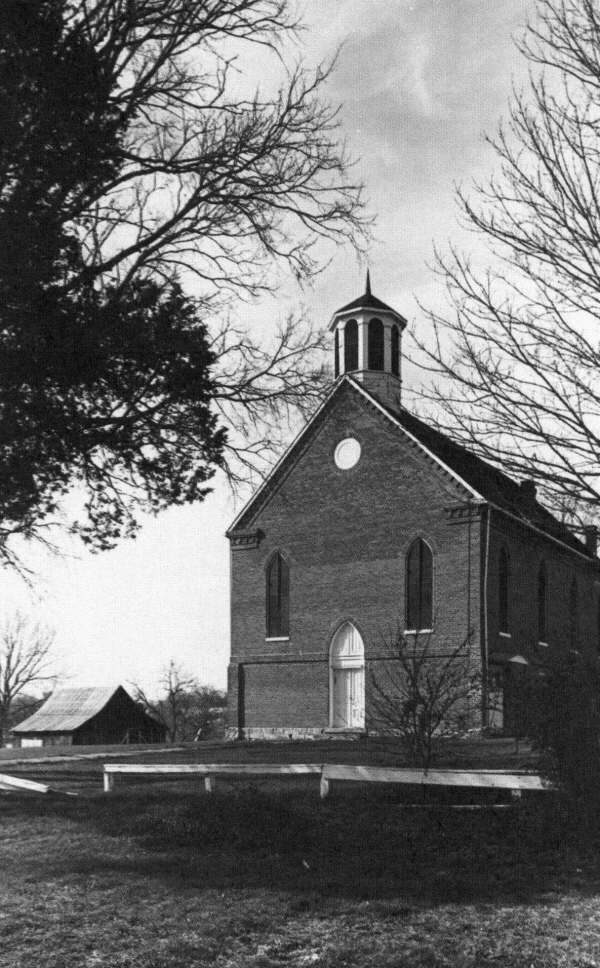 |
[27]
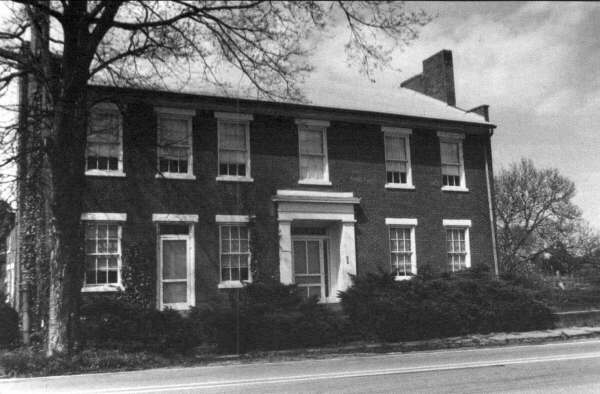
|
Jane Alexander Thompson house, early
1850's. A Presbyterian Virginian,
Thompson came to Caledonia as a young
unmarried woman in the 1820's, shrewdly
investing her patrimony in such a way as
to become perhaps the town's leading
merchant and estate administratrix. The
latter enterprise succeeded well because
she was related to most of the families in
the valley, who placed their estates in her
trusted hands for disposition. |
Thompson built this house to be a residence and store. Note the separate store entrance in the second range from the
left of the facade. The resulting asymmetry is so subtle in this full Georgian plan as to be scarcely noticeable at first
glance. Two unmarried sisters lived out their lives with her here, one caring for the house, the other the orchards
and gardens. For her part, Jane Thompson cared for business. |
Ruggles-Evans-Dent
house, early 1850's. This
full Georgian house
exemplifies the
refinement and restraint
characteristic of
Caledonia's best
buildings. |
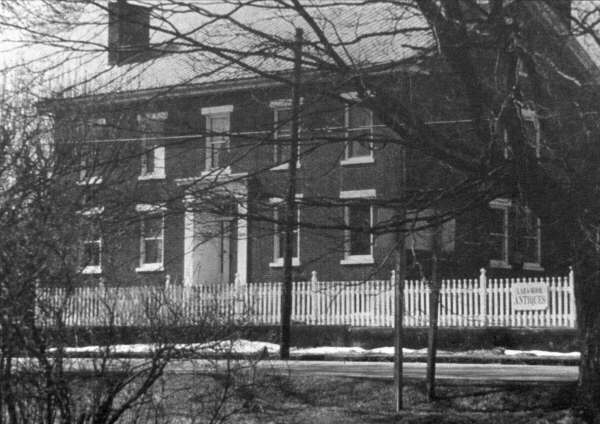 |
Its builder and first tenant
was Martin Ruggles, a
Massachusetts man who
invested successfully in land,
iron works, and other
enterprises, enabling him
finally to become the valley's
most prominent
proto-banker. |
[28]
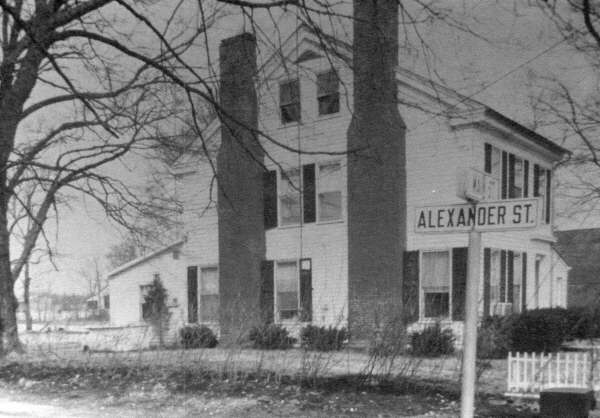 |
William Goforth Eversole house, early 1850's.
Four generations of Eversoles lived in
Caledonia and the Bellevue Valley. William
Goforth was the second of those generations.
The house of his son, Dr. George Eversole, is to
the left of the camera.
A Virginia Presbyterian like his neighbor Jane
Thompson, W. G. Eversole expressed his
architectural heritage in this two-thirds
Georgian plan house with characteristic
Virginia high-shouldered brick chimneys. |
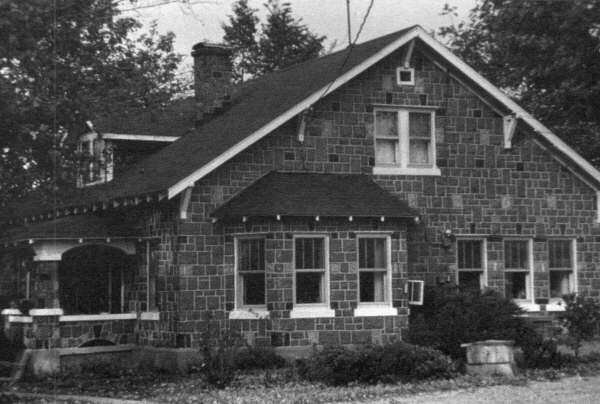
Muriel Akers house, ca. 1920. This gracious and commodious bungalow is a fine example of the use of red granite from
the surrounding St. Francis Mountains. St. Francis granite, a porphyry, was widely used throughout the United States
in public buildings and for street paving. Perhaps best known in Missouri is the paving of the entire St. Louis
riverfront.
[29]
Preserving Historic Houses
Few old houses can be saved. Many are the reasons. Perhaps the most common reason is that to
do so is too expensive. To continue them is not the best and highest economic use of their sites. A
poorer reason is disinterest and actual dislike born of ignorance. We often neglect to tell their
stories.
Here are four examples of preservation: the Nathan Boone house as a state historic site; the
Ha-Ha-Tonka ruin as the central feature of a state park; the Gray-Campbell house relocated in a
multi-purpose urban park; and the Blansit house as a bed and breakfast inn.

The Nathan Boone house, Greene County, Missouri, 1837. Nathan Boone was one of the several children of Daniel
Boone. Nathan and wife Olive came to southwest Missouri early in its pioneer period, opened a good farm on the rolling
prairie, and built one of the finest dog-trot log houses (black walnut) to survive in the state. Its interior is plastered, and
its original vernacular Federal Style mantels remain. A full porch extends across the back of the house. On its board
walls are carefully carved the letters of the alphabet. In the 1980's the Missouri Department of Natural Resources was
at long last able to acquire title. It is now under development as a Missouri State Historic Site.
[30]
Ha-Ha-Tonka fire, early 1940's. This great
mansion, on a high bluff overlooking a large spring
flowing into the Osage River in Camden County,
Missouri, represents a certain urban image of the
Ozarks. The Schneider family of Kansas City,
wealthy from the streetcar business, envisioned the
Ozarks as a kind of surrogate Scottish Highlands.
They imported Scottish stonemasons to build a
great hunting lodge here in the grand British
manner. Use of the house was cut short by Mr.
Schneider's accidental death. It subsequently
operated as a hotel; but that business did not
flourish. The place was too remote--no highway nor
railroad were close by. When the Lake of the
Ozarks was built in the early 1930's, Ha-Ha-Tonka,
on the south shore, was effectively cut off from
Kansas City and St. Louis.
After the fire, the ruins stood mute--and dangerous
to visitors--until the 1980's when Missouri turned it
and the surrounding land into a state park. |
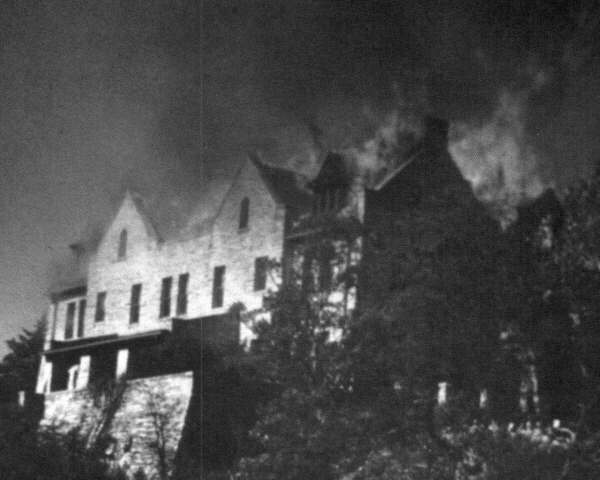 |
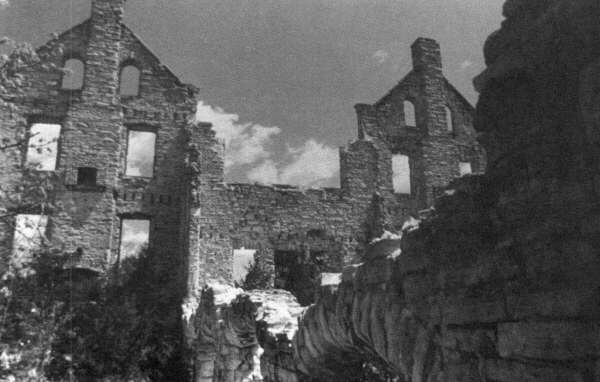
Ha-Ha-Tonka ruins today.
[31]
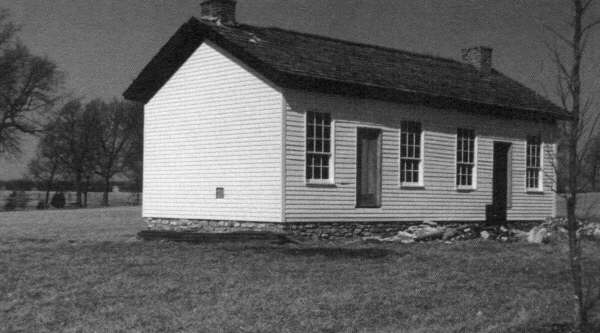
Gray-Campbell house, Springfield, Missouri, 1857. This
vernacular Greek Revival house was build by a
prosperous slave-owning family. Threatened in 1983 by
highway building, it was moved two miles and reset in a
multi-use city park, where restoration was accomplished
by private civic groups. |
Roof shingling festival for Gray Campbell house. Part of
the restoration was reshingling with hand-rived oak
shingles. While restorers were pondering the high cost of
that project, a storm toppled a gigantic shingle oak tree
in another city park. The Parks Department donated the
tree, volunteer shingle rivers agreed to direct the
project, and on a fine Saturday the public turned out to
participate.
 |
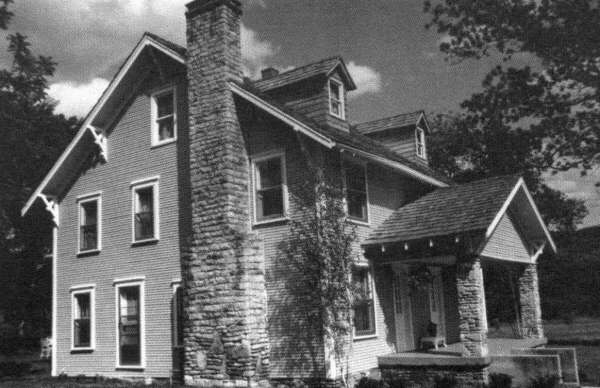
Blansit house, Taney County, Missouri. This two and half story bungalow, originally home to a prosperous cattle
ranching family, has been handsomely restored and opened as a bed and breakfast inn. Despite the high style features
of the house, it retains the traditional paired front doors.
[32]
Copyright -- OzarksWatch
Next Article | Table of Contents | Other Issues | Keyword Search
Local History Home
 Springfield-Greene
County Library
Springfield-Greene
County Library

